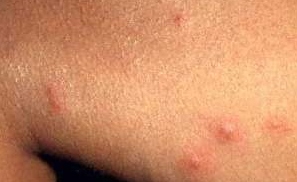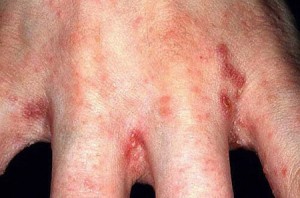In the earliest days of our baby’s life, we simply to do whatever we can to keep our baby as comfortable as possible to be able to develop freely limiting any issues, as much as we can, along the way. 
This is not an easy task since our babies, being new to this world, are very fragile and potentially open to all kinds of diseases that can make their first days, weeks and months a bit uncomfortable. One of the most common things our babies can endure is scabies.
Let’s take a closer look at scabies, how does my baby get it and possible treatments.
How does my baby get it?
Scabies is spread through direct physical contact with others that are infected or being in the same space or area as the infected person. Scabies spread and reproduce extremely fast but they need our bodies to survive. On its own scabies doesn`t last long at all approximately one day or a day and a half at most, but they spread fast and quickly so whenever there is an infected person this is a high-risk area for everyone. In addition, a babies skin is still extremely gentle and can be more prone to these kinds of infestations. For these reasons, locations with several babies or toddlers such as nursing homes or day care centers are traditionally a very high risk for a scabies infestation.
Areas of the body that are most commonly targeted for infestation (and if you see your baby being uncomfortable and uneasy check these areas first) are armpits, behind the knees, inside the elbows, between buttocks, between the fingers etc. Basically anyplace that is a little warmer and protected.
How to treat it?
Luckily, since it is a commonly spread thing there are several remedies that are available to help your baby overcome Scabies Mites.
Initially, it is highly recommended that you take your child to a doctor as soon as you have any doubts that they might have scabies. By early diagnosis and early treatment you will be helping all other parents by excluding your child from any group activities until they are scabies free.
Once the infestation is confirmed by your child’s physician there are a number of lotions and creams they may be prescribed, as well as natural remedies. Most commonly, your child will be prescribed a treatment with permethrin cream, crotamiton cream or sulfur ointment. If the infection becomes more severe antibiotics may be prescribed to help fight the infestation.
In combination with this, you can take some measures to make sure your home is Scabies Mite free.
Mites cannot survive long outside of our bodies so after the treatment starts, be sure to wash all the clothes and bedding of the infected person and vacuum all the surfaces they may have been in contact with.
A detailed general cleaning of the entire house is recommended.
After treatment and thorough house cleaning your baby will be mite free and good to go on new adventures with you!
 Because there are so many diseases that can effect the skin, Scabies can often be hard to diagnose.
Because there are so many diseases that can effect the skin, Scabies can often be hard to diagnose.
